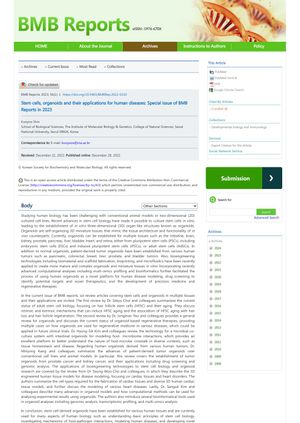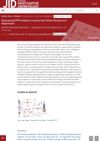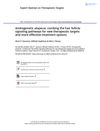Stem Cells, Organoids and Their Applications for Human Diseases: Special Issue of BMB Reports in 2023
December 2022
in “
Journal of Biochemistry and Molecular Biology
”

TLDR Organoids created from stem cells are used to model diseases, test drugs, and develop personalized and regenerative medicine.
Recent advances in stem cell biology have enabled the creation of organoids, self-organizing 3D miniature tissues that mimic the structure and function of in vivo tissues. Organoids can be established from pluripotent stem cells (PSCs), including embryonic stem cells (ESCs) and induced pluripotent stem cells (iPSCs), or adult stem cells (AdSCs) for multiple tissues such as the intestine, brain, kidney, prostate, pancreas, liver, bladder, heart, and retina. Patient-derived tumor organoids have also been established from various human tumors. Bioengineering technologies and computational analyses have been applied to create more mature and complex organoids. Organoids are used for human disease modeling, drug screening, and the development of precision medicine and regenerative therapies. A review by Dr. Sekyu Choi and colleagues focuses on hair follicle stem cells (HFSC) and their aging, discussing the association of HFSC aging with hair loss and hair follicle regeneration.






